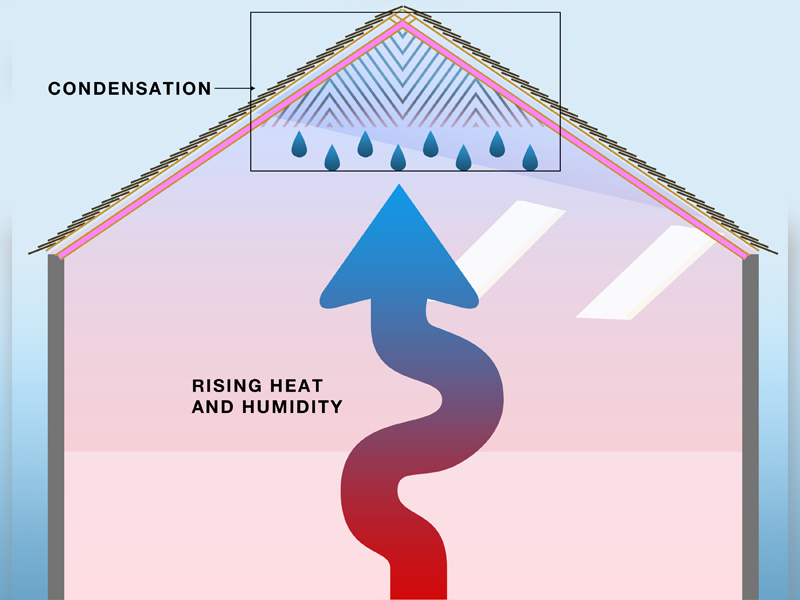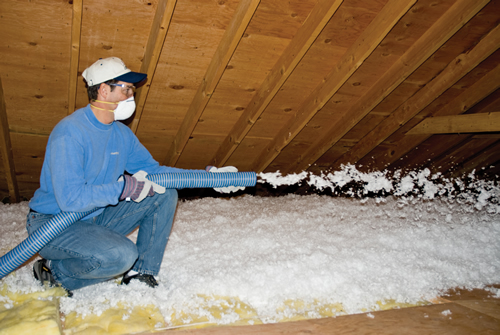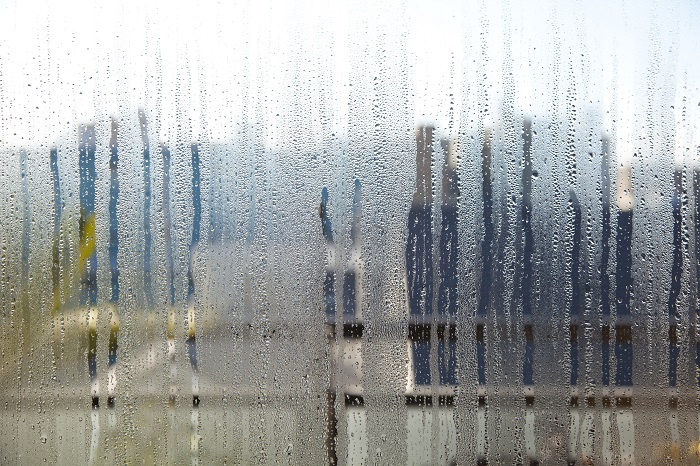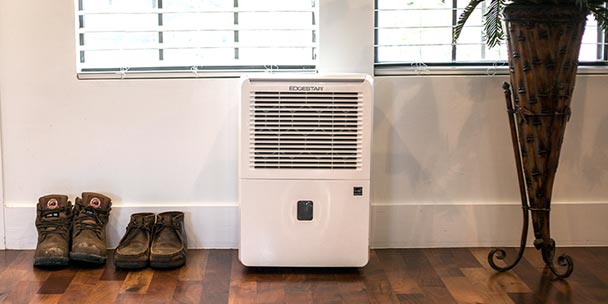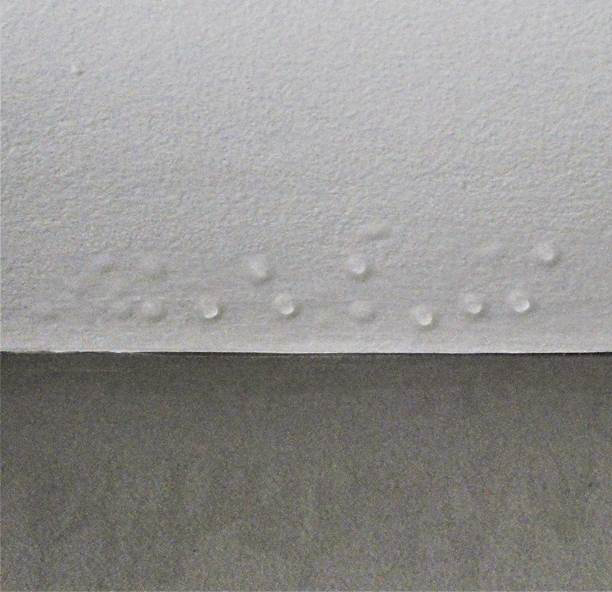
Photo Source
Ceiling Condensation is a common problem homeowners face and should be addressed promptly; excess moisture can eventually cause mold and mildew to form — quickly escalating a small problem into a much larger and potentially dangerous ordeal. Not only will you have to pay for a mold remediation company to handle the hazardous growth, but you’ll likely need to hire a contractor to repair the affected areas afterward. What a headache! It is helpful for homeowners to understand what causes the condensation and how to get rid of it before it becomes a bigger issue.
What Causes Ceiling Condensation?

Photo Source
Condensation on your ceiling occurs when the attic space above is poorly ventilated and insulated. This traps heat in the attic, which then warms the ceilings. When the cool air from your living space rises due to humidity in your home (often from cooking, bathing, or drying clothes), it comes in contact with the warm surface of the ceiling and condensation forms. Correcting the poor ventilation and insulation issues reduces the possibility of ceiling condensation and can also help lower your electric bill.
Fixing the Issue Step 1: Attic Ventilation

Photo Source
When sunlight heats the roof of your home, the temperature rises in the attic. This heat affects the building materials used to construct the ceiling below. One way to resolve this issue is to move the stagnant air in the attic, which will help keep the temperature down. An attic fan pulls hot air out of the space and draws in cooler air from outside. Having a ridge vent installed on your roof is another solution, which is what we did for our clients that had a ceiling condensation issue. These ventilation methods not only lower the attic’s air temperature, but also greatly reduce humidity levels, lessening the likeliness of ceiling condensation.
Fixing the Issue Step 2: Attic Insulation

Photo Source
Adequate insulation between the attic and the ceiling minimizes the influence of hot air, since there is a “cushion” of materials separating the two. You’ll notice that this also helps keep the inside of your home cool, as less cool air will be able to escape through the ceiling (lower electric bills, anyone?!) Blanket or blown-in insulation can be used to supplement older insulation or provide coverage for areas missing insulation. If you have insulation in your attic that is several years old, it’s a good idea to replace it, as insulation that has been exposed to water or high humidity is susceptible to mold or mildew. Again, not something you want to take a chance with!
Fixing the Issue Step 3: Reduce Humidity in Living Spaces

Photo Source
As mentioned, certain activities in the home can contribute to high humidity levels and the likeliness of ceiling condensation. Basically any activity that produces excess heat, such as: drying clothes, washing dishes, taking a hot shower, or cooking. It’s helpful to remove the heat created by these activities by using exhaust fans or vents, opening windows and doors, and keeping the vents in the dryer clean and operating well. It’s also a good idea to keep lids on pots and pans while cooking, keep the vent fan on when showering, and keep the temperature in your home slightly warmer than it is outside (if possible). The less moisture there is in the air, the lower the humidity levels, which is a great start to preventing ceiling condensation and lowering your monthly electric bill.

Photo Source
Another great way to reduce humidity levels in your home is to purchase a dehumidifier. Having a dehumidifier in your home will remove excess heat and moisture in the air caused by the formerly mentioned activities, and will definitely help to prevent the harsh effects of humidity on your home.
If you have noticed condensation forming on the ceilings throughout your home, we would be happy to meet with you for a consultation to discuss the best options for fixing the issue. Contact us today for more information!
Warm Regards,
Mike’s Guys

